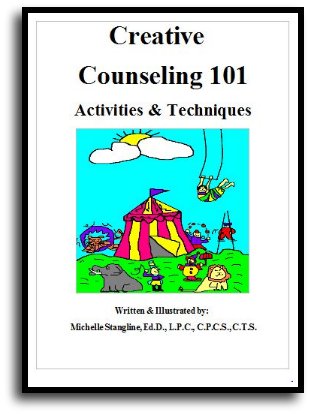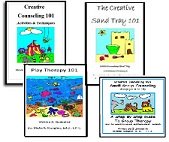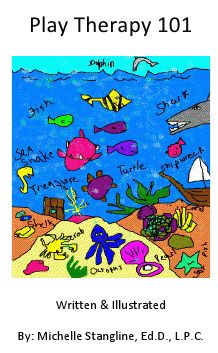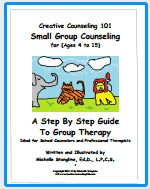Changes in the Family System and Family Therapy with Couples
Philosophy of Change
Briana Cowles
University of Georgia
Assumptions
Historically, society has painted the picture of a “normal” family that consists of a heterosexual, first marriage conjugal couple cohabiting with their biological children. It remains a popular belief that the husband becomes the economic provider and ultimate authoritarian, while the wife maintains domestic work and holds responsibility for upbringing of children (Dechter & Smock, 1994).
This is largely portrayed as the traditional family structure and is often considered normal in a functioning sense. Any deviations of this model- divorce and remarriage, adoption of different ethnic children, homo- or bi-sexuality- has often been considered peculiar and the making of a dysfunctional family. While this hypothetical, nuclear family is considered the idealized familial arrangement, it could not be farther from the truth as the structure and functioning of families is anything but uniform (Dechter & Smock, 1994).
In today’s society, however, numerous families diverge from this stereotype, and the components of a functionally stable family have less to do with the members and their individual roles, and more to do with how the members regard one another and how they cope with both predictable and unpredictable stressors.
Family systems work best when there is mutual respect for each member and the role they play within the family. How a particular member of a family views respect is often learned from previous generations- a child growing up with a lack of respect for her mother, may expect that her children will not respect her. Respect is often earned and mutual respect and understanding is needed for smooth functioning.
Children should respect their parents, and parents should acknowledge and ensure the children know that they are valued and opinions regarding familial matters are also respected. This action of mutual respect enables each other all members to understand their worth and know that their role within the family is equally important.
Along with respect, balancing workloads is equally important. Balance requires a comprehensive understanding of what each partner in the relationship is undertaking. This in turn requires open, non-judgmental communication between the partners, and each must be willing to admit and ask for assistance when they feel too much pressure is building up.
Additionally, one or both partners may have been raised in households where work was subdivided differently than what will be efficient in their current relationship. When one member is responsible for the majority of work within the system, animosity transpires. If one parent is held accountable for the children, household maintenance, fiscal responsibilities, among other things, animosity may begin to cultivate.
While this relationship of one overactive parent and one under-active parent may work short term, as soon as the dominance of the overactive parent is questioned, or if the burden becomes too much for that parent, resentment will develop. This arrangement may be a result of previous generations on either or both parental sides, however it will certainly impact how the children view their parent’s relationship and influence their future relationships.
Stressors, both predicted and unpredicted, impact the way families interact. Change is required within a family system upon the occurrence of a disturbance or intrusion in the family structure that results in some form of chaos. The reasons for change are unlimited, there are numerous stressors and the familial responses are infinite.
Incidences that occur that often stimulate a responding change are having children, change in job status (promoted, laid-off, fired), financial hardships, and divorce/forming new partnerships. As the family system struggles to acclimate to new roles, differences in what each member desires and needs to function will begin to occur. Ultimately, changes within a family system do not follow guidelines, and assumptions on family reactions are based on social economic status, race, and ethnicity. Change will be prompted to acclimate these new scenarios to maintain structure within the family. This could take the form of one partner returning to or taking time off work or moving closer to extended family. Lengthy discussions pertaining to how the family system will adjust best will be needed to ensure the most appropriate actions are taken.
Throughout the intervention process, the counselor should help secure an open and accepting climate which will encourage clients to speak openly thus allowing change because the clients will feel as though they are in a safe and non-judgmental environment. Through the guidance of a counselor, individuals learn to convey their feelings and frustrations calmly and honestly. The counselor will prompt suppressed feelings and vulnerabilities to be brought into the open. This inspires confidence in different members and thus allows open communication. Change can occur when the clients system realizes their patterns are no longer meeting the demand on the system. Clients may have attempted to use old patterns that at one point worked before a major change occurred (an example being the birth of a child). Old routines can further crisis within the changing family system and this could manifest as an extremely unruly child, whose parents feel as though they no longer have control, a spouse’s infidelity, spending incessantly, or criminal activities.
Families are guided through both their verbal and nonverbal communication and the counselor is able to intervene and assist in comprehension on all sides. This prevents one member from only stating their position and allows members who would otherwise be overshadowed to speak out. Helping clients to rephrase their problems in a more positive light would be the first step in changing communication patterns.
Reanalysis of common occurrences and painting a new insight on these happenings will assist client’s understandings of each other and delve into deeper feelings. From there, focusing on honest communication by helping the clients voice their concerns honestly, without degrading other members would be instrumental.
Outside of the therapist’s office, the immediate family system must be committed to change. If every member entangled within the problem is not committed, changes will be slow to manifest. It is not enough for one particular member to say they want to change but not play an active role in the process.
Difficulties will arise when clients feel forced into the process and it will be challenging to convince them that their current behavioral patterns do no longer suffice (Mitcheson, 2010). Additionally, the intervention process will not be effective if one member does not see an issue in the family system and feels the process is unnecessary.
They must take what the counselor has suggested, and begin to apply it in their everyday life. By completing homework assignments such as keeping a diary of positive interactions within the family system, the family will ideally realize that there is more to their intertwining relationships than anger. In turn, they’ll appreciate what each member is doing for the family as a whole and begin to understand why certain frustrations are felt.
The entire family would be encouraged and expected to attend sessions, however I also see value in holding individual counseling and counseling with smaller groups. I believe talking with individuals one on one, or with children and just the mother present at times assists in overcoming vulnerabilities, particularly when those vulnerabilities may be centered on a different member of the family.
Once those vulnerabilities are admitted and the individual has found solutions on coping with those, we could focus on expressing those and finding long term adjustment plans and compromises to accommodate everyone’s needs within the system.
Case Study
The Jones’ are a white, middle class, military family. Edward (father) has recently returned from a year and a half deployment, and the family is presenting with issues related to reconnection and stabilization following his return. In addition, Edward is suffering from minor PTSD which greatly impacts his daily functioning.
Other family members include Anne (mother/Edward’s wife), Nicole (oldest daughter, 13 years old), Melissa (middle child, 9 years old), and Jay (youngest son, 3 years old). Anne and Edward married young, but have been happily married for 20 years.
Edward had already been active duty military when he met Anne, who followed him across the country after they were married. Family life began to change after September 11, 2001, as Edward’s role in the military became much more serious. During his last deployment, Anne struggled as a single parent raising three dependent children with very different schedules.
Nicole has struggled emotionally, as she attempted to assist her mother during her father’s absence, her grades at school began to fall. She has withdrawn from friends because she feels as though they do not understand her situation; at home she remains very active in family life and often falls in the position of “peacemaker.” Melissa struggles understanding that her father had no choice leaving, and is angry that he left the family for so long. Jay does not remember his father, and was frightened of him up his return home.
Anne is the person to seek assistance and she states that they are having issues of attachment with their youngest child, and readapting to normalcy post-deployment. She states that their youngest child has not bonded with his father because of his absence during a critical growth phase.
Additionally, she points out that she needs help understanding her husband’s PTSD. She feels as though she is unable to help him as he has been unable to communicate to her his needs. Anne goes on to claim that she personally feels resentment towards her husband for coming home and expecting things to automatically return to how they were pre-deployment. Her family is now accustomed to his absence and they are struggling to find where his place is now that he is back.
The entire family of five comes to the first session, and Anne takes control. She describes the problems she believes the family is facing. Jay clings to her and his eldest sister, Nicole, who remains reserved throughout the session. Edward repeatedly claims that he doesn’t understand why there’s a problem, he is home and able to care for his family now. Anne and the children sit on a sofa together, while Edward is most comfortable sitting in a chair in the corner of the room. Anne explains that she has adjusted to life without him, and it isn’t possible for him to slide back into their life.
Nicole and Melissa both describe how things are different now that their father is home- Nicole no longer has to wake up early to help pack lunches for her siblings, and Melissa is able to join the city soccer team now that her father can take her to practice after school. Both girls state that their parents have been fighting more, and it makes the atmosphere at home distressing.
While the presenting problem was reintegrating Edward into the family, particularly with Jay’s lack of attachment, there appears to be more within the system than realized. Following the conclusion of the first session, the identification of underlying emotions that influence behaviors is brought up. The identified patient (IP), Edward, is struggling to reintegrate with his family as a result of PTSD, but there are underlying emotions that are impacting the relationships between members, rather than just with the IP.
Self of Therapist
When I envision myself as a therapist, I imagine working predominantly with families and children. I would strive to help families struggling with attachment and those dealing with issues of abandonment. Families coming from military backgrounds, would fit well with the model of therapy I wish to practice. Personally, children who have been abandoned, or children or military families who have lost a parent or loved one in combat, would be the most difficult, yet gratifying families to work with.
Coming from a military family, abandonment during deployment was something that I struggled with, and the fear of losing my father was consistently present. Working with children who these fears then became a reality would be increasingly difficult to serve without transferring my feelings and reservations onto them.
Working with families in these scenarios would be challenging, but through experience I believe that I would be able to overcome these personal vulnerabilities. Upon this, I would be able to relate to these families on a level that other therapists would not be able to do so.
Of course, understanding personal limitations would be necessary and I would have to ensure that emotions do not interfere with the intervention sessions, nor should my past be projected onto their current situations. While I would initially have difficulty with this, I believe over time and with practice, this family demographic would become an area of expertise for me.
Understanding that this is a potential issue for me, I believe is the first step in containing my feelings. Being conscious that I could project my own feelings of vulnerability would be key in making sure I provided the best possible course of treatment for my clients. I would focus on the strengths that I developed from my personal struggles to help guide clients. Separating my own experiences from those of my clients would enable me to keep my personal feelings in check, while assisting them through their own difficulties.
Ultimately, I would strive to avoid countertransference. Any intense emotion I felt during a session would call for personal dissection- why am I feeling upset at this person? Why am I angry? I would have to understand how these emotions may be affecting not only my tone, but also my objectivity. I know what my personal issues are, and would have to self-soothe so that I can return to my patient without becoming upset and saying something dominated by countertransference rather than empathy. The last thing I would want to happen is entangle myself and clients in a complex transference-countertransference dynamic.
Maintaining integrity would be of key importance for me. Consistently, I would strive to be aware of my personal belief system, values, and limitations that these may have on my work. I would always be sure to clarify the role I played for my clients and be sure that I functioned appropriately in accordance with those set standards and to avoid triangulation into the system. In doing this, any relationship that I form with clients that could be deemed as potentially emotionally harmful to myself or them would be immediately terminated and I would refer them to a fellow practitioner.
Goals
The ultimate goal would be to help the family as a whole understand why they truly needed therapy in the first place, as the true reason for intervention is often less than apparent. The goals of session would be helping clients as a unit understand what triggers certain emotions from other members, what circumstances make these emotions more vulnerable, and knowledge on how to deal with these emotions would increase the overall success of the sessions. As a therapist, the goal would be to help clients walk in their world without feeling the need to be validated by someone in a therapeutic position.
Additionally, helping clients understand themselves and each other better while alleviating any emotional pain or confusion would be a common goal throughout the intervention. This could be accomplished by helping them establish effective coping mechanisms or obtaining a more accurate understanding of their past and how they want their future to be different. Understanding previous generations of the family system will help clients understand their own vulnerabilities and also help them understand why they feel the way they do about certain issues.
Goals would vary dramatically, based on the clients need and desires. Improving communication, increased understanding and support, and stronger relationships are fairly universal and could be applied to most families in counseling. Applying these goals to every member of the family would help improve the system. Sessions would be fluid, and dependent on the needs of the identified patient and family as a whole. Goals are lofty and will take time to achieve, but through skills training they are obtainable. Certain skills that could be developed within the family are listening skills and communication styles, anger management, and the delegation of duties. Trying new methods of listening and communication and gaining new responsibilities will literally put members of the system into each other’s shoes and help them empathize with one another.
A combination of both family and individual intervention would work best. Families should come in willing to listen to one another and ready to accept that changes in routine need to be made within the system; however, working with individuals or groups of the family system separately is equally important. This would create a trusting atmosphere where they would be more willing to discuss the issues they feel are most important without the backlash from other members. Bringing the family back together would then allow these previously discussed issues to be brought up in a discussion, rather than a collision. Ultimately, working with the family as a whole unit benefits everyone, rather than just the identified patient. The family system will be able to adjust patterns and routines that will beneficially impact the entire unit.
References
Dechter, Aimée R., and Pamela J. Smock. The Fading Breadwinner Role and the Economic Implications for Young Couples. Madison, WI: Institute for Research on Poverty, U of Wisconsin--Madison, 1994. Print.
Mitcheson, Luke. Applied Cognitive and Behavioural Approaches to the Treatment of Addiction: A Practical Treatment Guide. Chichester, UK: Wiley-Blackwell, 2010. Print.
Disclaimer: This website and its content is intended for trained licensed mental health professionals and school certified mental health professionals to use for their clients / students at their own discretion.
*If you ignore the disclaimer above are using these techniques on yourself and you feel any discomfort or upset it is highly suggested that you seek out a licensed mental health professional immediately.
"Beyond Art Therapy" is the concept from Dr. Stangline that combines all creative fields in therapy. It is not the traditional "art therapy" but goes beyond to include sand tray therapy, play therapy, mindfulness, meditation, color therapy, cognitive behavioral therapy, and a vast majority of other therapies.
For any other type of mental health emergency call your local 911 / Police Number immediately.
Dr. Stangline does not offer advice / suggestions to anyone who is not a professional mental health provider, or a student who is studying this field and has questions about mental health programs of study.
See our Exciting Selection of eBooks:
Award Winning:
Creative Counseling 101 eBook
Our Best Seller!

Step By Step Therapy:
Learn how to be a more Creative Therapist with the Book that started it all!
- Graduate School Counseling book used by hundreds of graduate counseling students!
- Includes full color reproducible worksheets with most activities.
- Winner of the Counselor Writer of the Year Award, 2011, Georgia Regional Award
Download Your Copy Today Only $39.95:
See Creative Counseling 101 eBook Information Here:
Get the Set
of all four
eBooks for only $98.95:
An incredible collection of how to do therapy eBooks!
A $159.80 Value,
You Save Over $60!

Get your complete set of the Creative Counseling 101.com eBooks by Dr. Michelle Stangline for only $98.95, that's less than $25.00 per eBook (Regular Price is $39.95 for each eBook.).
Your complete set includes:
- Creative Counseling 101
- Creative Group Counseling 101
- Creative Play Therapy 101
- Creative Sand Tray 101
For more information click the link below:
See Complete Set of eBooks For Sale Here:
New!!! "Beyond Art Therapy" 101 eBook
Over 300 pages of Beyond Art Therapy activities and techniques. Learn what I teach graduate counseling students!
See the link below for more information.
Only $39.95

See More Invividual eBooks For Sale:
Sand Tray Therapy 101 eBook:
Learn how to do Sand Tray Therapy or enhance your skills.

Play Therapy 101 eBook
Learn how to do play therapy or enhance your skills.

Small Group Counseling eBook For Sale:
Learn how to do creative group therapy and enhance your skills.

School Counselor Guidance Lesson & Social Stories eBook for sale:
Get a year's worth of school counselor guidance lessons with "Creative Warm & Fuzzy Classroom Guidance Lessons eBook". Introduce your students to the "Warm & Fuzzy Way". Click the link below for more information:
Warm & Fuzzy School Counselor Guidance Lessons eBook
